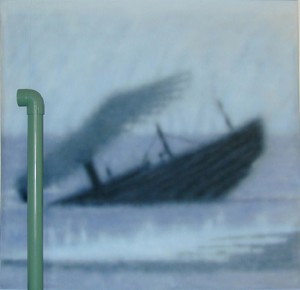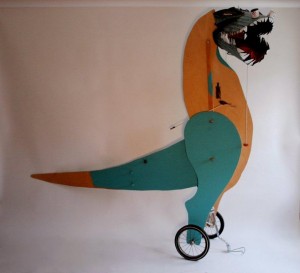
So You Think You Know About Contemporary Cuban Art
Living in the most heavily Cuban place on earth outside of Cuba, we naturally are exposed to work from Cuban and Cuban-American artists constantly — add that with such a rich artistic tradition, how could we not? But even with this type of exposure, the amount, quality, and context of the art workat the sprawling Freedom Tower, from the collection of Arturo and Liza Mosquera, is mind blowing.
About 85 pieces from Cuban and Cuban-Americans make up “Ways of Worldmaking: Notes on a Passion for Collecting,” which also includes commentary from the Mosqueras about their 20 years of amassing art and the relationships they have formed with the artists.
What strikes the observer immediately is the amount of large-scale paintings, in one place at one time like never before. Most of the names of the painters are familiar — you’ve likely encountered them more than once. But exhibited together, another familiarity jumps out, one that you may not have recognized before. Created predominantly in the 1980s and ’90s, the generation of Cubans who studied on the island during that time leave tell-tale signs of a common origin. There is a formalism, an intellectual base, and a technical skill that jumps from the canvases. Of course there are more obvious themes of exile and oppression that are often expressed in these works, but it’s the craft that really bonds them.
You’ve likely seen Glexis Novoa’s graphite etchings all over town, but have you seen such a huge city-scape of his hanging near a Gustavo Acosta, a Lydia Rubio, a Maria Brito? Put in this context, they create a different dialogue with each other, one that reveals new insight into these works.
Another room has a more 21st-century feel with artists who were both born on the island and on our end of the peninsula. Lovely, small, colorful pieces from Jorge Pantoja hang out with black-and-white drawings from Beatriz Monteavaro, while down the hall videos from Leyden Rodriguez Casanova and Luis Gispert make their own vibe.
There’s also sculpture, for instance from Cesar Trasobares and Pablo Cano, and some smattering of photography. The huge show is nicely set up, and set apart, by the sister curating team Duo Nosti
It’s an amazing survey of Cuban artists who have lived or passed through Miami. It’s also a heartfelt testament to the couple behind the collection, who are known to interact not just with the artwork they have brought into their lives, but with the artists themselves. In the “Notes” to the exhibition, they ask: “Where will this collection eventually be housed, in order to inform and teach others?” In Havana, in Miami? “Will this collection stand the test of time and endure into the future?” Answer that question yourself (and give yourself museum-type time) with a trip to the Freedom Tower. Likely it will be an eye-opening experience about art you thought you already knew.
For further enlightening, a series of panel discussions with the collector and many of the artists featured in the exhibition who live and work in South Florida will take place during the exhibition period.
“Ways of Worldmaking: Notes on a Passion for Collecting,” Cuban and Cuban-American highlights from the Mosquera Collection, through Nov. 7 at the Freedom Tower of Miami-Dade College, 600 Biscayne Blvd., Miami; 305-237-7700; [email protected].
Recent Content
-
Artsarticle ·
-
Artsarticle ·
-
Artsarticle ·

